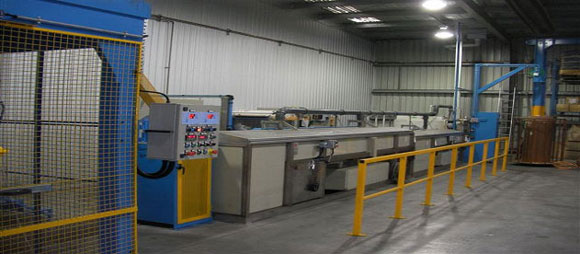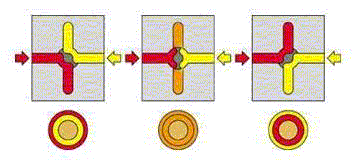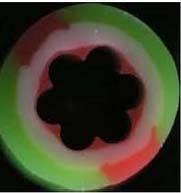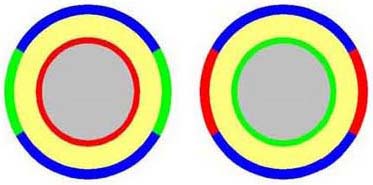- Tycab Rod & Wire
- Quick Colour Change Line
Tycab Rod & Wire
Tycab Rod and Wire Division is part of Tycab Australia Pty Ltd and has been operating since June 2006. Prior to that the facility was part of Tycan, based in Mittagong near Sydney since 2003.
The business was based around the Rautomead upcast copper casting machine producing 12.7mm and 8mm rod for the transformer and cable industry. These products are packaged on pallets, strapped and stretch-wrapped with net weights of 2 to 4 tons.
To extend this business, more products were developed targeting various market segments such as the canning industry, magnet wire and other businesses requiring drawn copper wire.
The product range includes annealed, hard drawn and soudronic wires. A Niehoff Rod
Breaker is used to produce this product range. The products vary from 1.06mm up to 3.6mm. These products are packaged as spool-less packs on pallets strapped and shrink-wrapped with net weights of 1 to 2 tons.
Recently a tin plating line was added to the factory to expand the product range. Now we can offer tin coated copper wire of various sizes from 1mm up to 3mm. The tin plating thickness can be applied according to customers needs from 2 microns up to 8 microns. These types of products can be used but not limited to the following markets: marine, irrigation, data, automotive, etc. Packaging is in the form of stems or customised cardboard boxes on pallets with a net weight up to 800kg.
The division is usually running a 5 day 24 hour continuous operation and is capable of producing 5000 tons of copper per year.

Rautomead casting machine

Spool-less coiler and a coil of soudronic wire

Otomec Tin Plating Line
Quick Colour Change Line
Tycab’s ongoing strategy is to implement state of the art technology and processes in order to be cost effective and provide the best customer service.
As part of this strategy Tycab has introduced quick colour change technology.
The time has arrived and the quick colour change line is commissioned and successfully operational. The new system allows change of product colour automatically resulting in less down time and ultimately better customer service.
In comparison to previous technology, in order to change colour, the line had to be stopped for long periods of time. This resulted in a lot of unnecessary product waste and long down times.
At the heart of the new machine you will find a quick colour change head assembly which looks rather daunting with all its hydraulic hoses and actuators. In reality the extrusion principles are the same as that of any other extrusion line with a co-extruder attached with a maximum of 2 colours. The extruders have been doubled up, resulting in two main extruders with two co-extruders, with the possibility of adding 12 different colours.
The main advantage of the system is that the material from the two main and two co-extruders can be changed from one flow channel to another, automatically.
 This diagram shows the basic concept of a single colour change system with two extruders, by adding two more of the same we now add a stripe to the configuration. This results in the flexibility to change either the base colour or the stipe colour or both at the push of a button, or automatically.
This diagram shows the basic concept of a single colour change system with two extruders, by adding two more of the same we now add a stripe to the configuration. This results in the flexibility to change either the base colour or the stipe colour or both at the push of a button, or automatically.
 Please note the picture is highly magnified to demonstrate the product structure. The actual product will appear to be almost the same as currently supplied.
Please note the picture is highly magnified to demonstrate the product structure. The actual product will appear to be almost the same as currently supplied.
Product performance is not affected and is exactly the same as current supply. Externally the finished product has exactly the same appearance as products manufactured by our current extrusion methods, only on cross sectional examination will you see the differing sub-layers.

Graphic demonstration of the execution of a colour change

